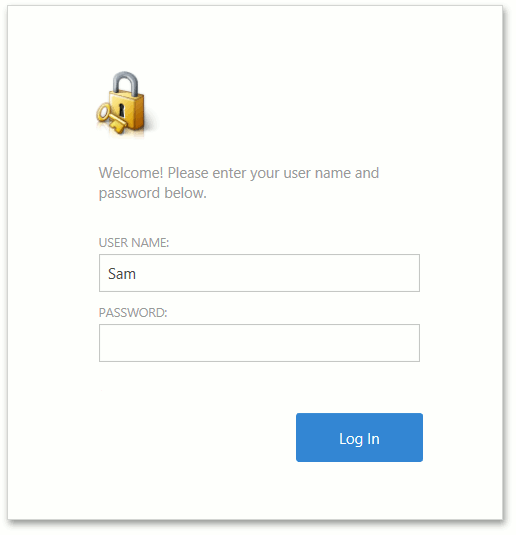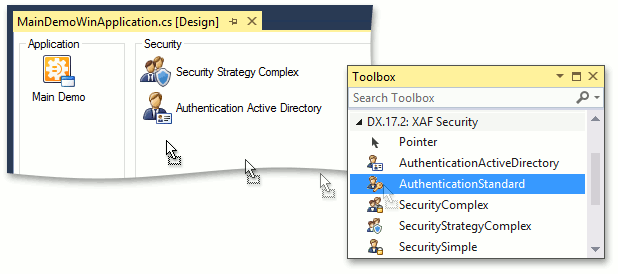AuthenticationStandard Class
An Authentication that assumes an interactive logon. A user inputs logon parameters (e.g. user name and password) manually via the logon dialog.
Namespace: DevExpress.ExpressApp.Security
Assembly: DevExpress.ExpressApp.Security.v18.2.dll
Declaration
[ToolboxTabName("DX.18.2: XAF Security")]
public class AuthenticationStandard :
AuthenticationBase,
IAuthenticationStandard,
ISupportChangePasswordOptionRemarks
When the AuthenticationStandard authentication is in use, the logon Window displays a Detail View of an AuthenticationStandardLogonParameters type object. This object has two string properties: UserName and Password. The UserName property is used to find the corresponding user in the database. Logging on to the application is not allowed if the user is not found or the specified password is wrong. The AuthenticationStandard object works only with objects of the AuthenticationStandardLogonParameters type or its descendants.
Logon Window in a WinForms Application

Logon Window in an ASP.NET Application

To enable to the AuthenticationStandard authentication, invoke the Application Designer and drag the AuthenticationStandard component from the ToolBox‘s DX.18.2: XAF Security page to the designer’s Security pane.

Alternatively, you can enable the AuthenticationStandard authentication in code. It is required to instantiate the AuthenticationStandard class and pass this instance to the SecurityStrategyComplex constructor. Then, the created security strategy object should be assigned to the XafApplication.Security property. In a Windows Forms application project, modify the Program.cs (Program.vb) file in the following manner.
public static void Main(string[] arguments) {
MySolutionWinApplication winApplication = new MySolutionWinApplication();
winApplication.Security =
new SecurityStrategyComplex(typeof(PermissionPolicyUser), typeof(PermissionPolicyRole),
new AuthenticationStandard());
// ...
}
In an ASP.NET application project, modify the Global.asax.cs (Global.asax.vb) file in the following manner.
protected void Session_Start(Object sender, EventArgs e) {
WebApplication.SetInstance(Session, new MySolutionAspNetApplication());
WebApplication.Instance.Security =
new SecurityStrategyComplex(typeof(PermissionPolicyUser), typeof(PermissionPolicyRole),
new SecurityDemoAuthentication());
// ...
}
If the server-side security is used, refer to the Middle Tier Security - WCF Service topic to see how to enable the AuthenticationStandard authentication.